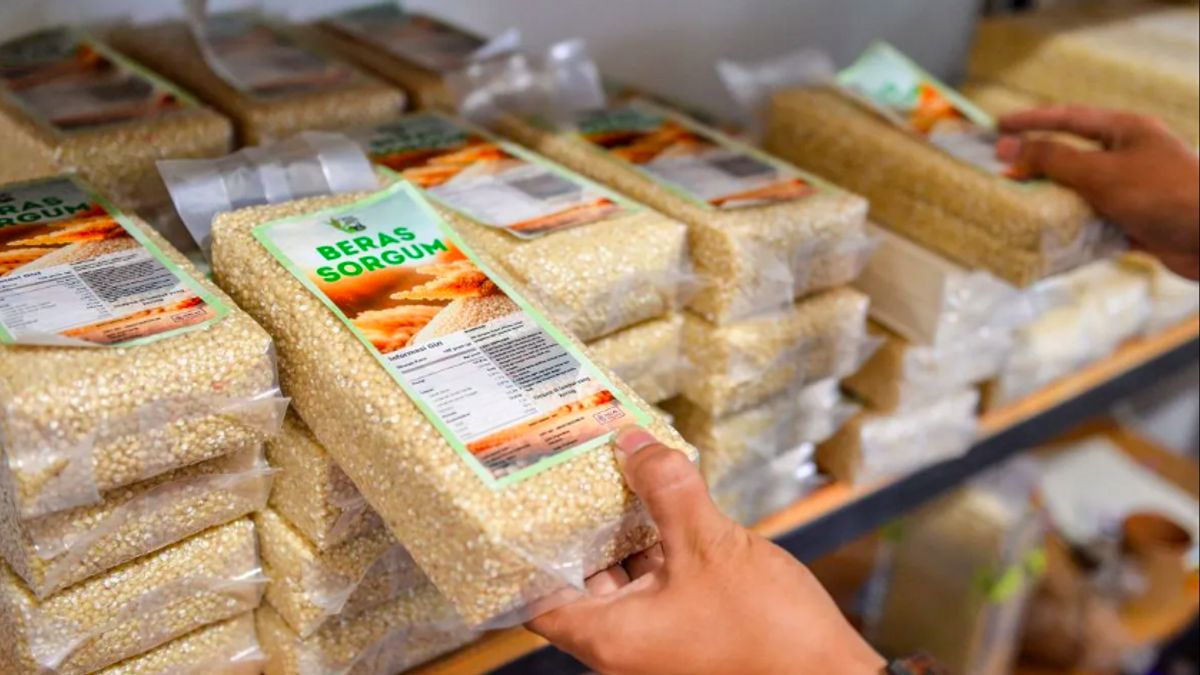JAKARTA - The National Research and Innovation Agency (BRIN) is conducting research to process sweet sorghum as an alternative sweetener.
This plant has the potential to complement sweetener needs which have been dominated by sugar from sugar cane, corn, and coconut. BRIN hopes that through this research, sweet sorghum can be processed into various products such as liquid sugar and ant sugar.
Sandi Darniadi, a researcher from BRIN's Center for Appropriate Technology Research, in an online discussion held Wednesday in Jakarta, explained that the sugar content in sorghum nira is quite high. The sucrose content in Nira reaches 89.4 mg/ml, glucose 17.98 mg/ml, and fruktose 9.97 mg/ml, so that sweet sorghum can compete with sugar cane and corn as a source of sweetener.
"Consulently, sugar levels in sorghum reach 76-78 percent, which is comparable to sugar levels in sugar cane, which is around 68-80 percent," Sandi said, as quoted by Antara.
Sandi also revealed that sweet sorghum has an advantage in terms of cultivation. This plant can be harvested within 3-4 months, much faster than sugar cane which requires 12 months.
In addition, sorghum requires about 4,000 cubic meters of water per hectare, while sugarcane requires up to 36,000 cubic meters of water per hectare.
"With a more efficient cultivation process, sweet sorghum can be a new choice for sugar sources, both in the form of liquid sugar and ant sugar," he added.
Sandi emphasized the importance of diversifying sweetener sources in Indonesia. Currently, sugar cane controls about 75 percent of global sugar production, followed by sugar bits with a contribution of 20 percent. The rest comes from other plants such as corn, coconut, agave, fire, and dates in relatively small amounts.
However, until now, sorghum has not been included in the list of significant sugar-producing plants. Therefore, according to Sandi, it is important for Indonesia to develop sorghum so that it can compete in the international sugar market.
SEE ALSO:
Sandi also noted an increase in world sugar demand which has been consistent since 2015 and is projected to reach 183 million metric tons by 2024. This demand growth shows real needs that need to be anticipated immediately by diversifying new sugar sources.
BRIN also continues to develop technology that can support the use of sorghum, both in the harvest and post-harvest stages, so that it can be implemented immediately in Indonesia.
There are also several sugar substitute processing technologies from sorghum nira tested. Among them are roller press machines with a capacity of 250 kg of stems per hour, as well as vacuum evaporators capable of processing 40 liters of nira per cycle to produce liquid sugar.
In addition, there is an open pan cooker with a capacity of 40 liters per process and an oven delydrator that functions to stabilize water levels to produce ant sugar.
In the future, BRIN has designed various research projects until 2027. The focus includes the application of sorghum sugar processing operational standards (SOPs), increasing production capacity, and product diversification. The hope is that sorghum can be mass produced and provide great benefits for the people of Indonesia.
The English, Chinese, Japanese, Arabic, and French versions are automatically generated by the AI. So there may still be inaccuracies in translating, please always see Indonesian as our main language. (system supported by DigitalSiber.id)

















